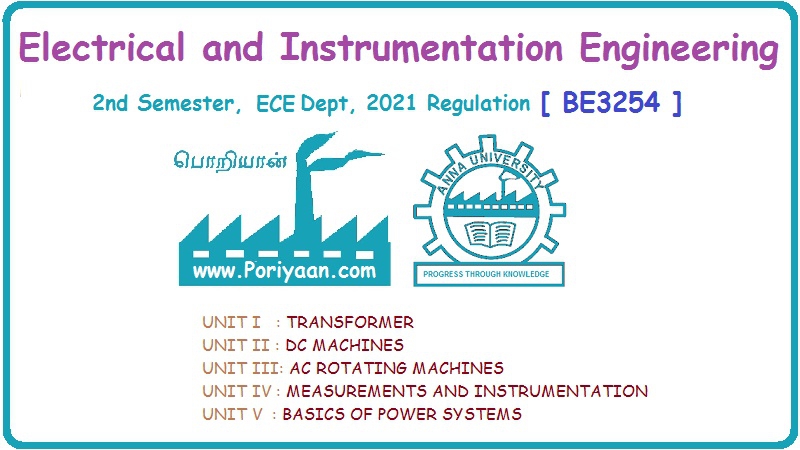Electrical and Instrumentation Engineering: Unit III: AC Rotating Machines
Synchronous Motors
Characteristics, Principle of Operation, Method of Starting
Synchronous Machine or Motor is electrically identical with an alternator or ac generator. A given synchronous machine may be used at least theoretically as an alternator, when driven mechanically or as a motor when driven electrically just as in the case of de machines.
SYNCHRONOUS MOTORS
Synchronous
Machine or Motor is electrically identical with an alternator or ac generator.
A given synchronous machine may be used at least theoretically as an
alternator, when driven mechanically or as a motor when driven electrically
just as in the case of de machines. Synchronous motors are rated between 150 kW
and 15 MW and run at speed ranging from 150 to 1800 rpm.
Some
of the characteristics of synchronous motor are -
(1)
It runs either at synchronous speed or not at all.
Synchronous
Speed Ns = 120 f / p
(2)
It is not inherently self starting. It has to be run upto synchronous speed by
some means, before it can be synchronized to the supply.
(3)
It is capable of being operated under a wide range of power factors, both
lagging and leading. Hence it can be used for power correction purposes, in
addition to supplying torque to drive loads.
Principle of Operation
When
a 3φ winding is fed by a 3φ supply then a magnetic flux of constant magnitude
but rotating at synchronous speed is produced. Consider a two pole stator
rotating at synchronous speed in clockwise direction.
With
the rotor position as shown in figure. Suppose the stator poles are at that
instant situated at points A and B. The two similar poles, N and NS
as well as S and SS will repel each other, with the result that the
rotor tends to rotate in the anticlockwise direction.
But
half a period later, stator poles having rotated around, interchange their
position. i.e., NS is at point B and SS at point A. Under
these conditions, NS attracts SS and attracts N. Hence
rotor tends to rotate clockwise. Hence we find that due to continuous and rapid
rotation of stator poles, the rotor is subjected to a torque which is rapidly
reversing. For large inertia the rotor cannot instantaneously respond to such
quickly reversing torque, with the result that it remains stationary.

Now
consider the condition shown in Figure 3.53(a). The stator and rotor poles are
attracting each other. Suppose that the rotor is not stationary, but is
rotating clockwise, lo with such a speed that it turns through one pole-pitch
by the time the stator poles interchange to their positions as shown in Figure
3.53(b). Here again the slator and rotor poles attract each other. It means
that if the rotor poles also shift their positions along with the stator poles,
then they will continuously experience a unidirectional torque i.e., Clockwise
Torque.
Method
of Starting
The
rotor is speeded up to synchronous/near synchronous speed by some arrangement
and then excited by the dc source. The moment this synchronously rotating rotor
is excited, it is magnetically locked into position with the stator. It is
because of this interlocking of stator and rotor poles that the motor has
either to run synchronously or not at all. The synchronous speed is given by:
NS
= 120 f / P
Electrical and Instrumentation Engineering: Unit III: AC Rotating Machines : Tag: : Characteristics, Principle of Operation, Method of Starting - Synchronous Motors
Related Topics
Related Subjects
Electrical and Instrumentation Engineering
BE3254 - 2nd Semester - ECE Dept - 2021 Regulation | 2nd Semester ECE Dept 2021 Regulation
